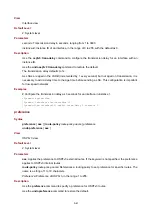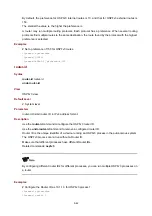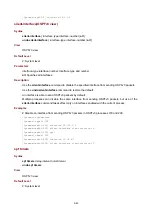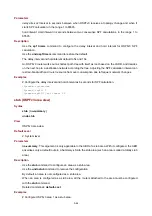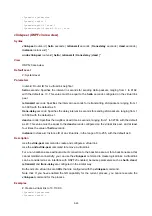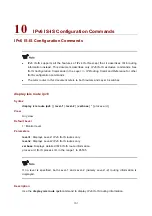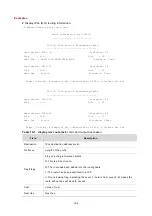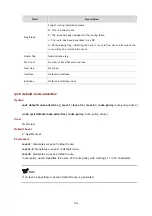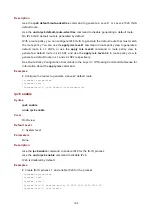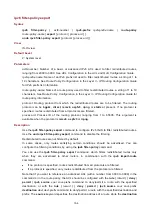
9-45
<Sysname> system-view
[Sysname] ospfv3 1
[Sysname-ospfv3-1] area 1
[Sysname-ospfv3-1-area-0.0.0.1] stub
vlink-peer (OSPFv3 area view)
Syntax
vlink-peer
router-id
[
hello
seconds
|
retransmit
seconds
|
trans-delay
seconds
|
dead
seconds
|
instance
instance-id
] *
undo vlink-peer
router-id
[
hello
|
retransmit
|
trans-delay
|
dead
] *
View
OSPFv3 area view
Default Level
2: System level
Parameters
router-id
: Router ID for a virtual link neighbor.
hello seconds
: Specifies the interval in seconds for sending Hello packets, ranging from 1 to 8192,
with the default as 10. This value must be equal to the
hello
seconds
configured on the virtual link
peer.
retransmit seconds
: Specifies the interval in seconds for retransmitting LSA packets, ranging from 1
to 3600, with the default as 5.
trans-delay seconds
: Specifies the delay interval in seconds for sending LSA packets, ranging from 1
to 3600, with the default as 1.
dead seconds
: Specifies the neighbor dead time in seconds, ranging from 1 to 32768, with the default
as 40. This value must be equal to the
dead
seconds
configured on the virtual link peer, and at least
four times the value of
hello
seconds
.
instance Instance-id
: Instance ID of an virtual link, in the range of 0 to 255, with the default as 0.
Description
Use the
vlink-peer
command to create and configure a virtual link.
Use the
undo vlink-peer
command to remove a virtual link.
For a non-backbone area without a direct connection to the backbone area or for a backbone area that
cannot maintain connectivity, you can use the
vlink-peer
command to create logical links. A virtual link
can be considered as an interface with OSPFv3 enabled, because parameters such as
hello
,
dead
,
retransmit
and
trans-delay
are configured in the similar way.
Both ends of a virtual link are ABRs that are configured with the
vlink-peer
command.
Note that: If you have enabled the GR capability for the current process, you cannot execute the
vlink-peer
command for the process.
Examples
# Create a virtual link to 10.110.0.3.
<Sysname> system-view
[Sysname] ospfv3 1











